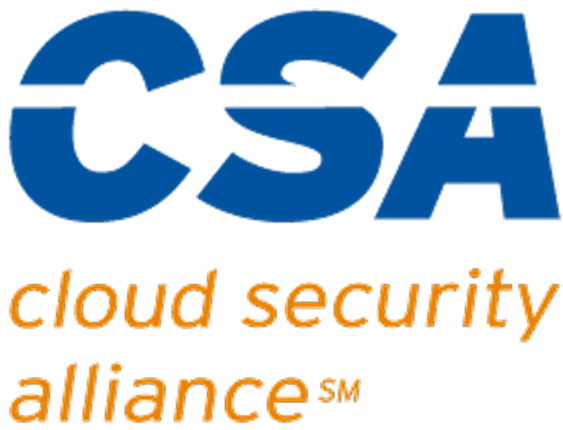Introduction
Data leak: any incident, vulnerability, or lax procedure that causes sensitive information to be exposed. It could be a hacker breaching your system, a disgruntled employee leaking sensitive data, or an external breach.
A data leak can be a devastating event for a business. In addition to the cost of mitigating the breach, there is also the potential for damage to the company’s reputation and customers. In 2021 the average cost of a data breach was $4.24 million. That’s a lot of money to lose, and it’s only going to worsen with time. If you’re not doing everything you can to protect your data, you’re at risk of becoming one of those statistics.
Protecting your data is sometimes easy and sometimes easier said than done. Many businesses – particularly small businesses – don’t know if or how they’re leaking data. A recent study found that 58 percent of companies don’t know how much data their employees share externally. And that’s just the beginning of the problem.
Data leakage can come from any number of sources, from insecure networks and devices to careless employees and third-party vendors. We’ll take a brief look at three common sources of business data leakage and go over some steps to remediate them.
Poor security practices
Business data leaks are often caused by employees’ negligent security practices, such as opening malicious emails or clicking on links from unknown senders. These careless mistakes can expose confidential company information to cybercriminals.
In the past year, several high-profile cases of business data leaks were the direct result of poor security practices. One such example is the leak of sensitive data from Uber, which occurred after an employee opened a phishing email that contained malware. The malware gave hackers access to the personal information of 57 million Uber users and drivers. Another recent example is the leak of customer data from British Airways, which occurred when attackers compromised the airline’s website with a malicious script. The attack resulted in the theft of personal data belonging to 380,000 customers.
Social media can also be a path for business data leakage. It’s hard to imagine a business that doesn’t have a Facebook page, Twitter account, or LinkedIn profile. But as companies become increasingly reliant on social media to connect with customers and promote their products, they are also becoming more vulnerable to data leakage. Social media can be a path for business data leakage because it’s easy for hackers to find sensitive information on public profiles, and employees often use unsecured personal accounts to share company information. Additionally, social media platforms can be used to spread malware or phishing attacks that can steal login credentials or financial information.
Unsecured devices
There are many ways that a data leak can occur, but one of the most common is through unsecured devices. A “bring your own device” (BYOD) policy can be convenient for employers and staff, but it also poses a data security risk to businesses when employees use their personal devices to access business data. A study by Cisco found that 63 percent of companies have at least one employee who regularly uses an unsecured personal device for work purposes. This leaves the business vulnerable to data leaks if the device is compromised.
Data leaks that occur in this manner are often a result of employees’ poor IT skills or ignorance of potential dangers. These employees tend to assume that their personal devices are safe for work, which is not always the case. Personal devices may not have the same security features as business-owned devices, and they may not be password-protected. If an employee’s device is compromised, the business data could be at risk.
Third-party breaches
Data is one of the most important assets a company has in the business world, used to make strategic decisions, improve operations, and create new products and services. That’s why it’s so alarming when business data is leaked due to a third-party breach.
Third-party breaches can happen in several ways. For example, hackers may gain access to sensitive information through a vulnerability in an external system or application connected to the company network. Or, an attacker may steal login credentials from an employee and use them to access confidential data. Regardless of the source, a third-party breach can wreak havoc on an organization. It can expose highly sensitive data and cause immediate damage to reputation, brand, and bottom line. It may be challenging to determine who is responsible for the leak in some cases.
Fixing business data leaks
No matter how big or small, every business is susceptible to data leaks. Businesses need to understand the threats presented to their data and take steps to secure it. Here are some suggestions on how to begin.
Implement better security policies and practices
Businesses should implement strong security policies and practices to protect and secure confidential and sensitive information. An essential first step is to create a business data classification scheme. This will help employees understand which data is sensitive and should be protected accordingly.
- Make sure the data classification levels are easy to understand. This will help employees know which information is sensitive and which is not. Have a system in place for classifying data so that everyone is using the same terminology. If the levels are unclear, people may inadvertently share sensitive information or not realize that they are handling something confidential.
- Label data with the most sensitive classification first. By designating the most sensitive data as the top priority, employees are aware of the importance of keeping this information safe and secure. In addition, labeling the data in this way makes it easier to track who is accessing which files and when. This helps to ensure that only authorized individuals have access to the most sensitive company information.
- Restrict access to classified business data as much as possible. Employees need to be given access only to the data they need to do their jobs and should not share passwords or other access information with anyone else.
- Train employees to handle sensitive customer and business information correctly. Employees need to be trained to identify sensitive data, store it securely, and dispose of it properly. By training employees on handling sensitive information correctly, businesses can help ensure that this information is protected from accidental or unauthorized access.
- Regularly review your business data classification scheme to ensure it is still effective. Changes in business needs or technology may require updating your classification scheme.
Use strong, unique passwords and data encryption
A recent study found that 43 percent of all data breaches result from weak or stolen passwords. It is important to use strong passwords to protect your business and customer data. By using unique, difficult-to-guess passwords for each account, business owners can help ensure that their customer data remains secure. Passwords should be at least 12 characters long and include a mix of letters, numbers, and symbols. Avoid using easily guessed words or phrases, and use a unique password for each account or system – don’t reuse passwords. Additionally, passwords should be changed regularly to help keep them safe from hackers.
Encryption is the process of scrambling data so that only authorized recipients can access it. Encryption technologies can help protect data from being accessed by unauthorized individuals. Encryption is used in various applications, including email, file sharing, and secure communications. There are two main types of encryption: symmetric key encryption and public-key encryption. Symmetric key encryption uses a single key to encrypt and decrypt data. Public key encryption uses two keys: a public key and a private key. The public key can be used to encrypt data, while the private key can only be used to decrypt data. Public key encryption is more secure than symmetric key encryption because it is more difficult to crack the code. Public key encryption is also more efficient because it allows users to share encrypted data without exchanging keys.
Limit access
While it is necessary to allow broad data access to specific key individuals within the company, it’s crucial to generally limit access to only those who need it to protect sensitive information. Too much access can lead to information being compromised or leaked out unintentionally.
A few strategies can be used to limit access appropriately, such as the use of passwords or file/folder access permissions or restricting the use of certain software programs or hardware devices that can store or access sensitive information. Additionally, limiting physical access to areas where this data is kept is also important.
Employees must also be made aware of the importance of protecting business data. They should be trained on how to spot phishing attacks, for example, and taught how to handle confidential information appropriately. Businesses can help protect their data from being leaked by taking these measures.
Conclusion
Data leaks can have a devastating impact on businesses. They can cause financial damage, harm the company’s reputation, and even loss of customers. It is essential to correct the causes of data leaks so that your business can avoid these harmful consequences. Implementing better security practices can help prevent these leaks and protect your data. Another critical step is to audit your systems for vulnerabilities regularly. If you find any weaknesses, you need to take steps to fix them immediately. Finally, routinely test your security measures to make sure they are effective. If you find a weakness in your security, act quickly to correct it.




